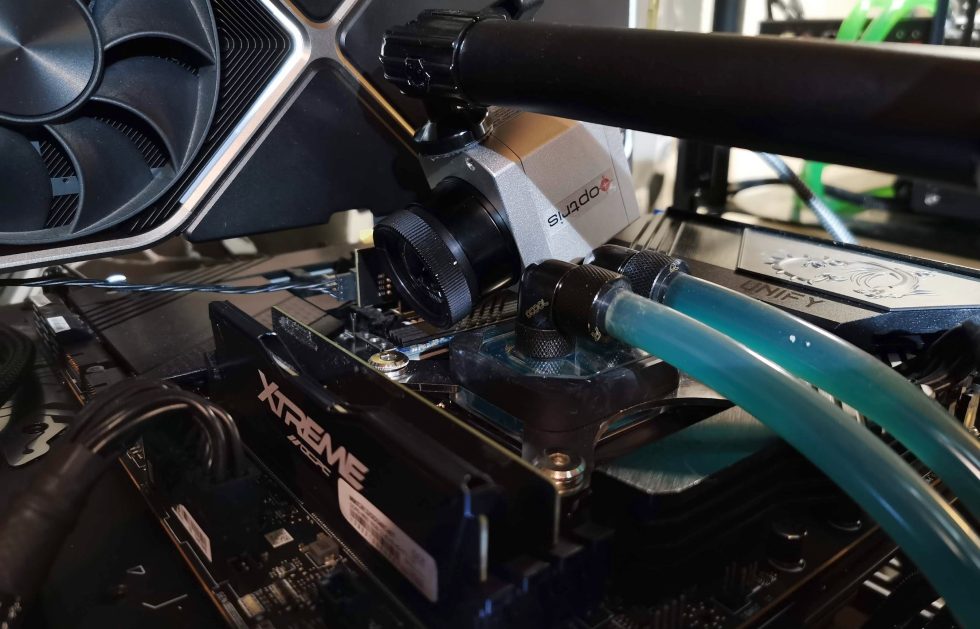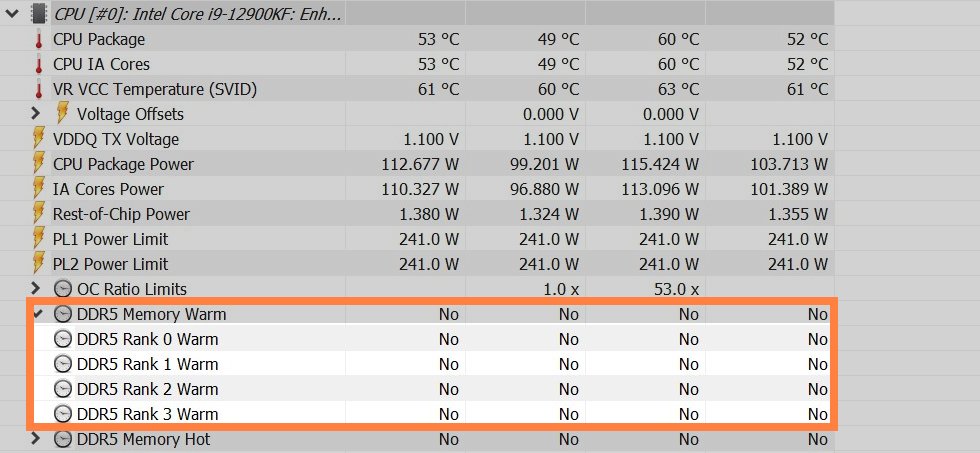In the meantime, I have not only measured a memory kit from one manufacturer, but also analyzed several kits in more detail. However, what Micron supplies and has been and is being used by various manufacturers is simply not capable of reading the true memory temperatures! Here one has simply omitted the up to two temperature sensors and thus also blocked the readout. But more on that in a moment, because it’s actually a technical punch in the gut of those who would like to include some safety in memory OC. by monitoring the status. In the age of smart components, something like this is actually incomprehensible.
At this point I would also like to thank the second curious person in the bunch, namely Martin Malik from HWINFO. We measured and evaluated at the same time, almost as a team. Martin steadily modified the software (thx!) a bit for this purpose and we tried to evaluate and plausibly interpret possible flags with my technical means, his specially compiled “beta” versions and a simulated hotbox. Now, unfortunately, the JEDEC specification allows for up to two dedicated temperature sensors per module, but does not make this mandatory, nor does it specify the location of the sensor placement.
I have tested memory from OCPC (DDR5 4800 Extreme) and Corsair (DDR5 5200 Dominator) and with it also the current price range. It doesn’t really matter whether it’s cheaper or more expensive RAM – Micron is and remains Micron, with all its limitations. The program HWINFO recognizes meanwhile quite reliably whether one or two of the possible sensors exist at all. And no, here it could already be determined that this is probably not the case with both products. Nevertheless, it could be that it is a matter of a selection or interpretation error. Trial and error makes perfect. Interesting is also the range for the temperature, which ends at 95 °C for both products. We should also keep this value in mind for later.
And even if sensors were available, real temperature values in the form of exact numbers are not provided at all! This would also clarify that DDR5 cannot be read directly from the silicon, even if sensors existed. Only flags exist that could map the return value as a coarse temperature range. Especially since the temperature detection also depends on the refresh rate and the flags have to be read out via the CPU loop.
| Cool | < 80 °C |
| Warm | 80 – 85 °C |
| Hot | 85 – 90 °C |
| Maximum | 90 – 95 °C |
| Too hot | > 95 °C |
I have logged via the external measurement setup if and when the individual temperature flags are triggered, in case the detection of the presence of the sensors might not work exactly and contrary to expectations something is reported. But this was not succesful. Another flag from the debug dump indicates “no read out” and the flags in question unfortunately remain at zero, thus providing no status, even though I was at well over 80 °C on the chip surface and one could well have speculated 90 °C inside in some cases.
A small note about the software used. This is an internal build created specifically for these tests and is not currently available for download as an official beta. When we have completed more extensive tests with other modules from other chip manufacturers, then a final implementation can also take place after validation of the potential measured values. Until then, the current memory bars should be considered unmeasurable.
Of course, even now temperatures are read out, only they are things that the world (almost) does not need. What is returned there, we now clarify in the next chapter.




































20 Antworten
Kommentar
Lade neue Kommentare
Veteran
1
Mitglied
1
Urgestein
Veteran
Urgestein
1
Urgestein
Urgestein
1
Urgestein
Mitglied
Mitglied
1
Mitglied
Urgestein
Urgestein
Urgestein
Alle Kommentare lesen unter igor´sLAB Community →